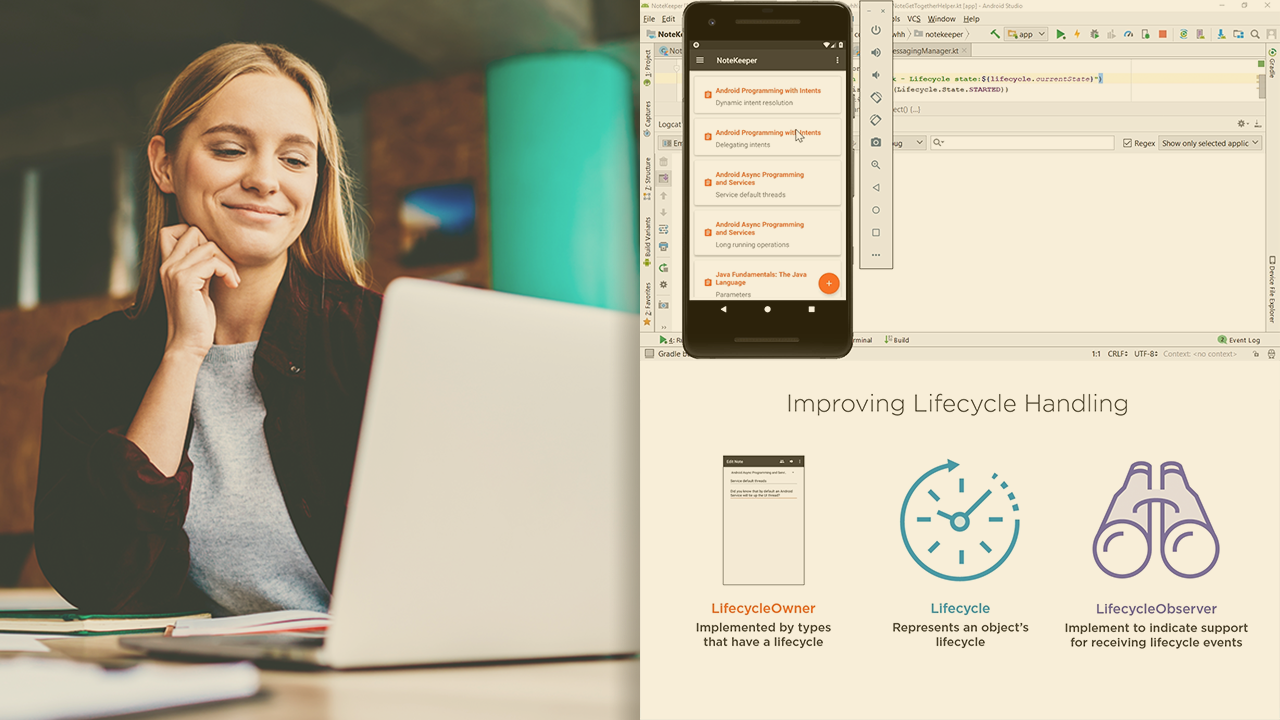- Course
Managing LifeCycle and ViewModel Data
Learn the skills necessary to effectively maintain activity state and simplify coordination with the activity lifecycle using the Android Architecture Componets' ViewModel, Lifecycle, and other related types.

- Course
Managing LifeCycle and ViewModel Data
Learn the skills necessary to effectively maintain activity state and simplify coordination with the activity lifecycle using the Android Architecture Componets' ViewModel, Lifecycle, and other related types.
Get started today
Access this course and other top-rated tech content with one of our business plans.
Try this course for free
Access this course and other top-rated tech content with one of our individual plans.
This course is included in the libraries shown below:
- Core Tech
What you'll learn
Effectively managing Android activity state and coordinating the lifecycle of components within an activity are essential to providing a high-quality and consistent user experience; however, doing so can sometimes be a challenge. In this course, Android Apps with Kotlin: ViewModel and Lifecycle, you’ll learn how to use the Android Architecture Components’ ViewModel, Lifecycle, and other related types to deliver just such an experience. First, you'll see how to use ViewModel to simplify managing activity-related data and maintain consistent access to that data even when the system recreates the activity in response to device orientation changes. After that, you'll explore how to use ViewModel in cooperation with onSaveInstanceState to assure a more consistent user experience when moving between apps. Next, you'll discover how to leverage Lifecycle events to simplify coordination between life cycle dependent components and the activity that uses them. Finally, you’ll delve into Lifecycle states to create more flexible, easier-to-use life cycle dependent components. By the end of this course, you'll have the necessary skills and knowledge to create Android apps of your own that provide a high-quality and consistent user experience with the Android Architecture Components’ ViewModel, Lifecycle, and other related types.
Managing LifeCycle and ViewModel Data
-
Version Check | 15s
-
Introduction | 2m 21s
-
Activities - More Than Just a Pretty Face | 2m 56s
-
Managing Activity State with ViewModel | 3m 36s
-
There's a Bug in Our App | 4m 9s
-
Adding a ViewModel and Build Dependencies | 4m 51s
-
Accessing Our ViewModel with a Lazy Property | 4m 54s
-
Restoring the Activity State | 3m 49s
-
That Bug's Fixed, but We Just Found Another One | 2m 48s
-
Managing More Complex State with ViewModel | 4m 27s
-
Verifying App Behavior | 1m 30s
-
Summary | 2m 20s

